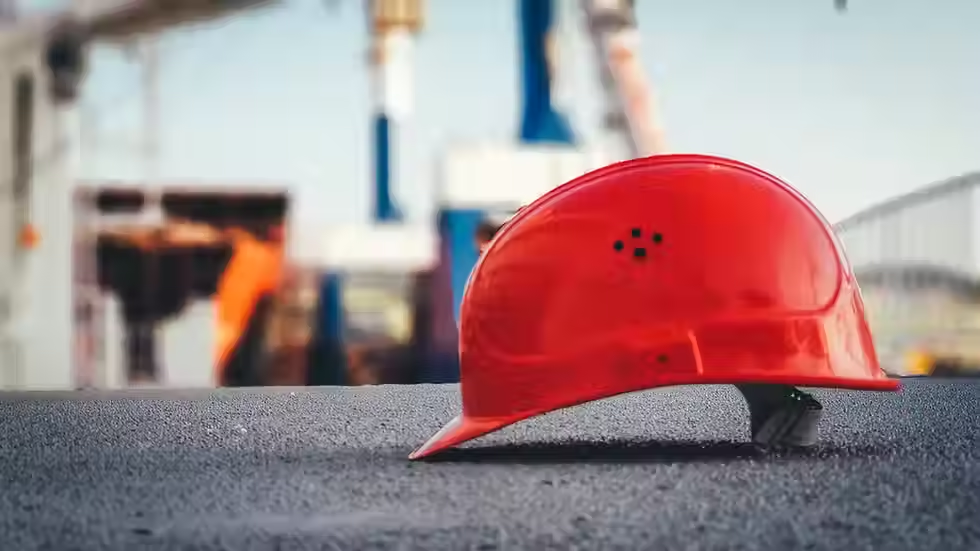Understanding the Basics of Mixed-Use Construction
- squadrdcmarketing
- Sep 22
- 4 min read
Mixed-use construction is transforming the way cities and communities develop. By combining residential, commercial, and sometimes even industrial spaces into a single project, mixed-use developments create vibrant, efficient, and sustainable environments. This approach offers many benefits, from reducing commute times to fostering social interaction and economic growth.
In this article, we will explore the fundamentals of mixed-use construction, its advantages, common examples, and practical tips for those interested in this innovative building method.
What is Mixed-Use Construction?
Mixed-use construction refers to the development of buildings or complexes that integrate multiple functions within the same structure or area. Typically, these functions include residential living spaces, commercial businesses, and sometimes office or recreational facilities.
This type of construction contrasts with traditional zoning, where residential, commercial, and industrial areas are separated. Mixed-use projects aim to create a more dynamic and interconnected urban fabric.
Key Features of Mixed-Use Construction
Integration of different uses: Residential units, retail shops, offices, and sometimes entertainment venues coexist.
Walkability: Residents and visitors can access amenities without needing a car.
Efficient land use: Maximizes the value of limited urban space.
Community building: Encourages social interaction and a sense of place.

Benefits of Mixed-Use Construction
Mixed-use construction offers numerous advantages for developers, residents, and cities alike. Understanding these benefits can help stakeholders make informed decisions about adopting this approach.
Economic Advantages
Increased property value: Properties with mixed uses often command higher prices due to their convenience and appeal.
Diverse revenue streams: Developers can generate income from multiple sources, such as rent from residential units and commercial leases.
Job creation: Commercial spaces within mixed-use developments create local employment opportunities.
Environmental and Social Benefits
Reduced traffic congestion: By placing homes near workplaces and shops, mixed-use developments reduce the need for long commutes.
Lower carbon footprint: Less driving means fewer emissions, contributing to sustainability goals.
Enhanced community engagement: Shared spaces encourage residents and visitors to interact, fostering a stronger community.
Practical Urban Planning
Efficient infrastructure use: Utilities and public services can be optimized for mixed-use areas.
Flexible zoning: Mixed-use projects can adapt to changing market demands and demographics.
Improved safety: Active streets with diverse uses tend to be safer due to increased foot traffic and natural surveillance.

What are examples of commercial and residential?
Mixed-use construction can take many forms, depending on the location, scale, and purpose of the development. Here are some common examples that illustrate how commercial and residential spaces coexist.
Vertical Mixed-Use
This is the most common type, where different uses are stacked vertically within a single building. For example:
Ground floor: Retail stores, cafes, or restaurants
Middle floors: Office spaces or small businesses
Upper floors: Apartments or condominiums
This layout maximizes land use, especially in dense urban areas.
Horizontal Mixed-Use
In this model, different uses are spread horizontally across a development site. For example:
A shopping center adjacent to townhouses or apartment complexes
Office parks combined with residential neighborhoods and parks
This approach is more common in suburban or less dense areas.
Live-Work Spaces
These are units designed to serve as both living and working spaces, ideal for freelancers, artists, or small business owners. They often feature flexible layouts and separate entrances for business and residential use.
Transit-Oriented Developments (TODs)
Mixed-use projects located near public transit hubs encourage the use of public transportation. These developments typically include residential units, retail, and office spaces within walking distance of train or bus stations.

How to Plan a Successful Mixed-Use Construction Project
Planning a mixed-use construction project requires careful consideration of various factors to ensure functionality, profitability, and community acceptance.
Conduct Market Research
Identify the needs and preferences of the target population.
Analyze local demographics, income levels, and lifestyle trends.
Study competitors and existing developments.
Choose the Right Location
Proximity to public transportation, schools, and amenities is crucial.
Consider zoning regulations and potential for future growth.
Evaluate accessibility and parking options.
Design for Flexibility and Integration
Create spaces that can adapt to changing uses over time.
Ensure smooth transitions between commercial and residential areas.
Incorporate shared amenities like green spaces, gyms, or community rooms.
Collaborate with Stakeholders
Engage local authorities, community groups, and potential tenants early.
Address concerns related to traffic, noise, and environmental impact.
Foster partnerships with experienced architects, engineers, and contractors.
Focus on Sustainability
Use energy-efficient materials and systems.
Incorporate green roofs, solar panels, and water-saving technologies.
Design for natural light and ventilation.
Manage Construction Efficiently
Plan phased construction to minimize disruption.
Coordinate logistics for multiple uses and tenants.
Ensure compliance with safety and building codes.
The Future of Mixed-Use Construction
As urban populations grow and lifestyles evolve, mixed-use construction is poised to become even more important. Innovations in technology, design, and materials will continue to enhance the appeal and functionality of these developments.
Trends to Watch
Smart buildings: Integration of IoT devices for energy management and security.
Modular construction: Faster, cost-effective building methods.
Green infrastructure: Increased focus on sustainability and resilience.
Community-centric design: Emphasis on public spaces and social interaction.
Challenges to Overcome
Balancing diverse needs of residents and businesses.
Navigating complex zoning and regulatory environments.
Ensuring affordability and inclusivity.
By understanding these basics and staying informed about trends, developers and planners can create mixed-use projects that enrich communities and drive economic growth.
For those interested in exploring options for residential commercial construction, partnering with experienced professionals can make a significant difference in project success.
Embracing Mixed-Use Construction for Vibrant Communities
Mixed-use construction offers a promising path toward more livable, sustainable, and economically vibrant communities. By blending residential and commercial spaces thoughtfully, these developments create environments where people can live, work, and play in close proximity.
Whether you are a developer, planner, or community member, understanding the basics of mixed-use construction is essential for making informed decisions that shape the future of urban living. With careful planning, collaboration, and innovation, mixed-use projects can unlock new opportunities and improve quality of life for all.



Comments